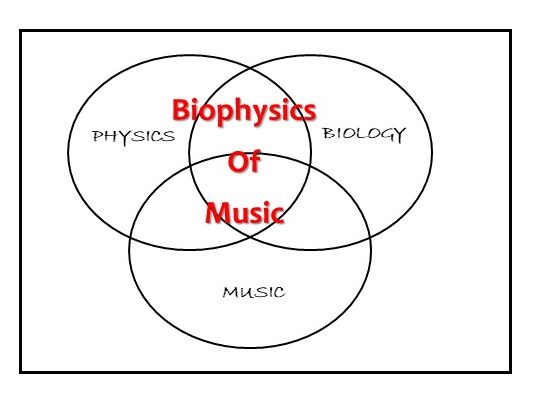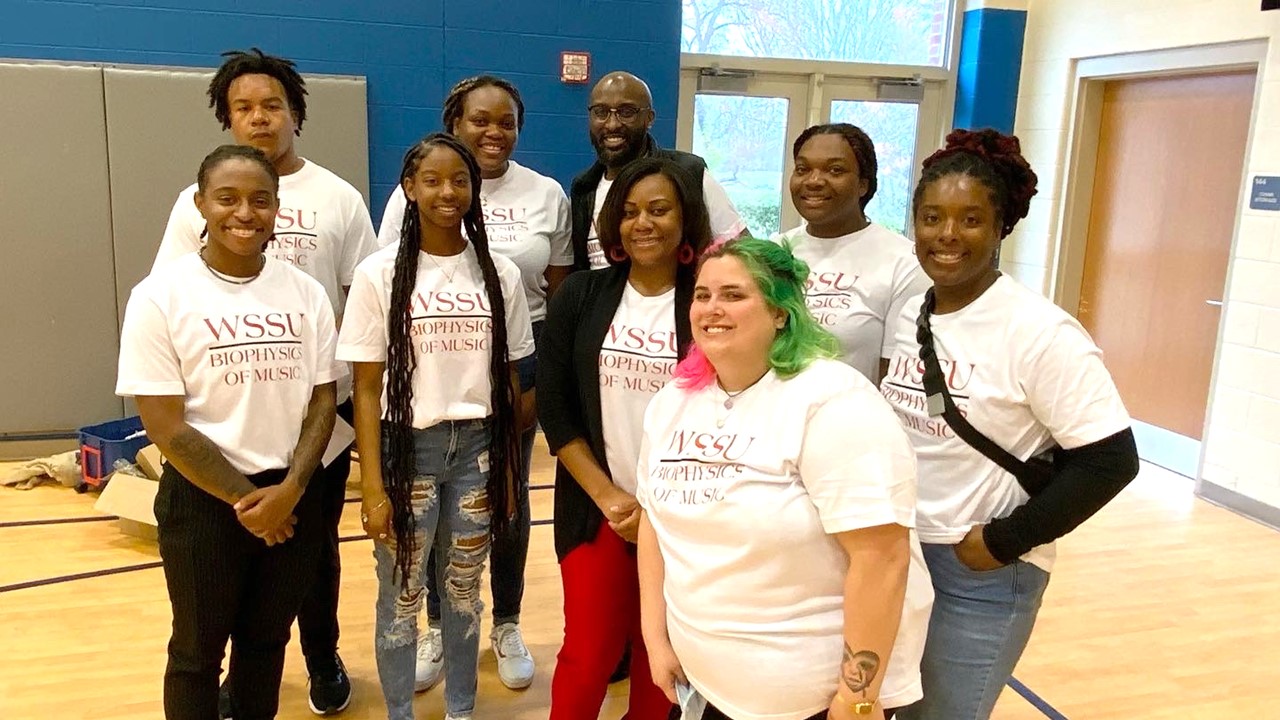The Biophysics of Music (BPM) program integrates physics, music, and biology by enhancing holistic knowledge such that individuals can see the application of physics in their daily lives, especially as it relates to the normal rhythms of life and the body. The goal is to introduce others to fun and exciting ways of learning physics, particularly in strengthening conceptual knowledge after engaging with BPM related activities. Because there tends to be an ongoing problem of STEM recruitment and retention throughout the nation, this project aims to represent physics in a unique fashion to capture others and provide an engaging perspective, especially for underrepresented populations of individuals. While the core of the program focuses on undergraduate students, the BPM program is for all age ranges and educational backgrounds, providing a key connection of physics to the everyday world and people’s daily lives.

Introduction
While the number of individuals with physics degrees has increased over the last 20 years, there is a deficit in the number of underrepresented individuals in the field of physics, especially in comparison to other STEM fields. Physics continues to be one of the most intimidating sciences across the STEM fields, causing many to redirect themselves away from the field whether it is a lack of a sense of belonging, how the subject is portrayed or the persona that the subject is suggested to exemplify. The BPM program is multi-faceted in that it addresses outreach, research, and teaching. Research is approached from two aspects:
- teaching research in the classroom setting to help students have a clear understanding of what research is, fully understanding the scientific methods, how it can be utilized, and experimental design, as well as providing knowledge in effective approaches to reading and comprehending scientific literature.
- experiencing research in the laboratory to help students gain hands-on experimental skills to perform and conduct purposeful scientific research. Some of the research projects have been centered around skin conductivity, beat frequency, musical genre response to cell growth and viability, and electrical response to music.
The aspect of teaching and learning is centered around promoting interests in music and biology to enhance the knowledge and understanding of key physics principles. Several topics are focused upon that include the connection between music and genetics; the mechanics associated with dance both internally and externally; the electrical activity of the body, particularly regarding the heart and brain; and the energy of sound and forces of sound waves.
The emphasis of outreach is to make a connection with the local community and K-12 population through displaying the unique ways in which physics integrates with both music and biology. The idea is to provide early exposure such that the youth will value the importance of physics to other disciplines and daily life, while potentially considering a future career in the field. This could lead to improving the deficit of a diverse population within the field.
Core Aspects of the Project
Our approach aims to promote interaction with other students, encouraging a sense of belonging. It is unique in the aspect that it integrates three distinct disciplines. Typically, two of the three fields tend to align; however, this program is unique in that it utilizes all three disciplines of physics, music, and biology to enhance knowledge and understanding in physics.
A key finding of this work is that individuals seem to have a greater appreciation of physics upon being educated in knowing that it plays an integral role in day-to-day life. Several people have mentioned that they tend to view their daily lives differently since experiencing various BPM related activities. Likewise, an exciting aspect of this work is that we were able to offer the first Biophysics of Music Virtual Summer program in 2020. Between COVID-19 and the racial equity protests, the project team aimed to identify a way to incorporate social justice with biophysics and music. Twenty-nine participants participated in a pre-camp survey assessing their interest and participation in biology, physics, and music. Of the 29 respondents, 72% were female, 17 students were middle school students, 11 were high school students and 1 was a college student. Of the 29 respondents, 65% had previously participated in one or more STEM related camps. In addition, we partnered with a local elementary school and had a community event that impacted more than 200 individuals including elementary students, teachers, counselors, and administrators. The project team worked closely with a teacher liaison and the principal to design activities that enhanced the learning experience for the students that participated. Furthermore, each participant received protocols that could be used at home to continue the learning, fun and engagement of what was gained during the daylong event.
Impact of the Work & Lessons Learned
A key aspect to this work is that several students have surprised themselves by how interested and engaged they become with how the material is presented. Historically, physics has been portrayed a particular way in which it tends to discourage or not promote the engagement of everyone. What we have aimed to do with the BPM program is to focus on ways that everyone can feel a sense of belonging and understanding with aspects that are presented. One way that we have been successful in achieving this is through showcasing non-traditional fields that utilize physics on a regular basis. These include: a dancer, sound engineer, US naval captain, skin scientist, optometrist, music therapist, beekeeper, and electrophysiologist.
COVID-19 has been a challenge with this work in that the lecture and lab courses had to be delivered remotely; the laboratory research was hindered. An additional challenge has been that students hear the word “physics” and are still intimidated. We have exerted efforts to minimum the initial usage of the word to attract others through common language. Upon experiencing BPM related events, individuals walk away with a holistic experience and realize that physics is easier to digest and more fun than previously believed.
Our future work aims to continue efforts in promoting research, teaching, and outreach. It is imperative that the aspects of recruitment and retention in physics improve, particularly in communities of color and underrepresented populations.
